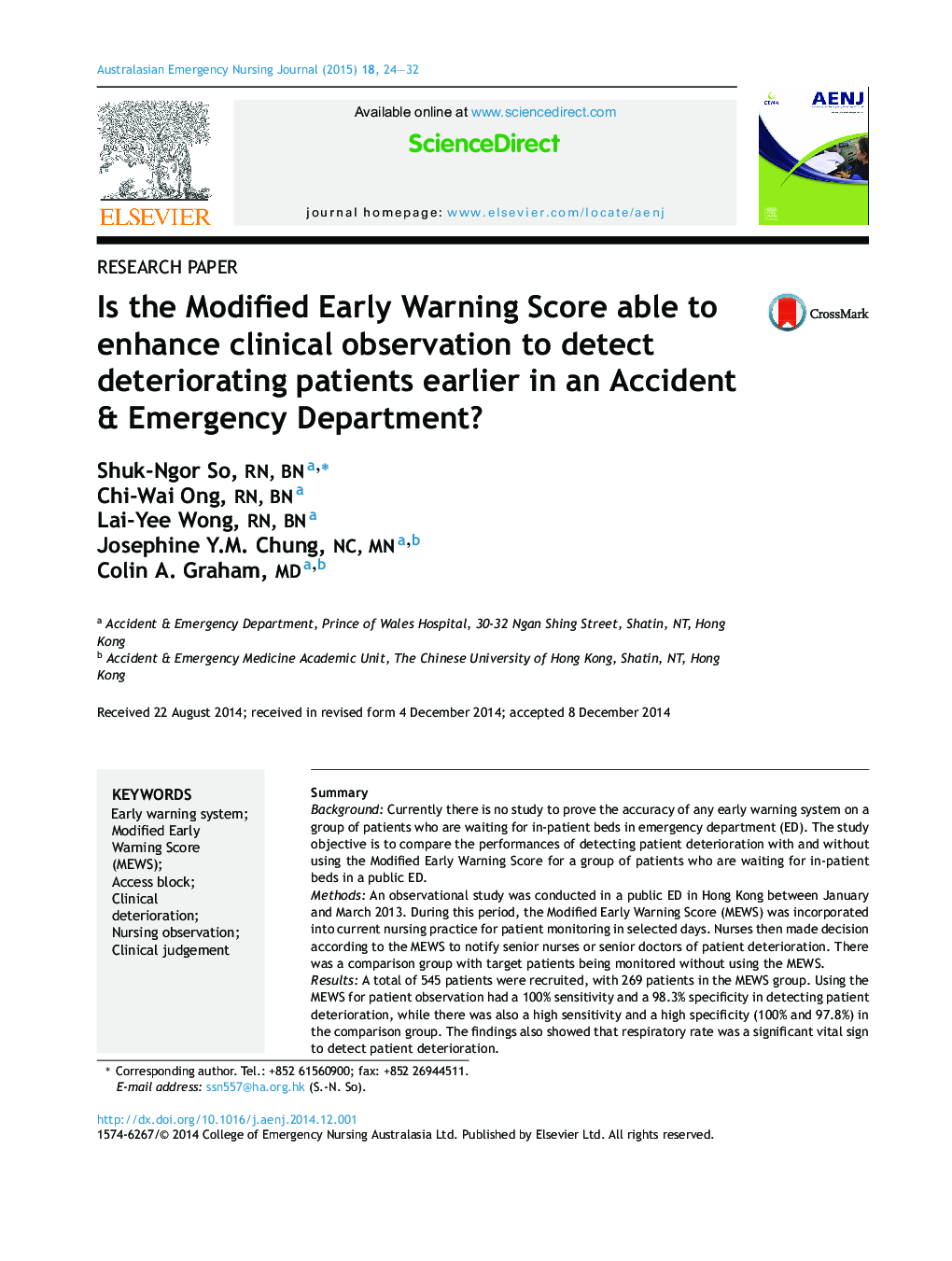| Article ID | Journal | Published Year | Pages | File Type |
|---|---|---|---|---|
| 2605574 | Australasian Emergency Nursing Journal | 2015 | 9 Pages |
SummaryBackgroundCurrently there is no study to prove the accuracy of any early warning system on a group of patients who are waiting for in-patient beds in emergency department (ED). The study objective is to compare the performances of detecting patient deterioration with and without using the Modified Early Warning Score for a group of patients who are waiting for in-patient beds in a public ED.MethodsAn observational study was conducted in a public ED in Hong Kong between January and March 2013. During this period, the Modified Early Warning Score (MEWS) was incorporated into current nursing practice for patient monitoring in selected days. Nurses then made decision according to the MEWS to notify senior nurses or senior doctors of patient deterioration. There was a comparison group with target patients being monitored without using the MEWS.ResultsA total of 545 patients were recruited, with 269 patients in the MEWS group. Using the MEWS for patient observation had a 100% sensitivity and a 98.3% specificity in detecting patient deterioration, while there was also a high sensitivity and a high specificity (100% and 97.8%) in the comparison group. The findings also showed that respiratory rate was a significant vital sign to detect patient deterioration.ConclusionsUsing the MEWS for patient monitoring did not significantly enhance the performance in detecting patient deterioration for a group of patients who are waiting for in-patient beds in a public ED. However, the MEWS may be beneficial to less experienced nurses who have less clinical experience to identify patient deterioration.
